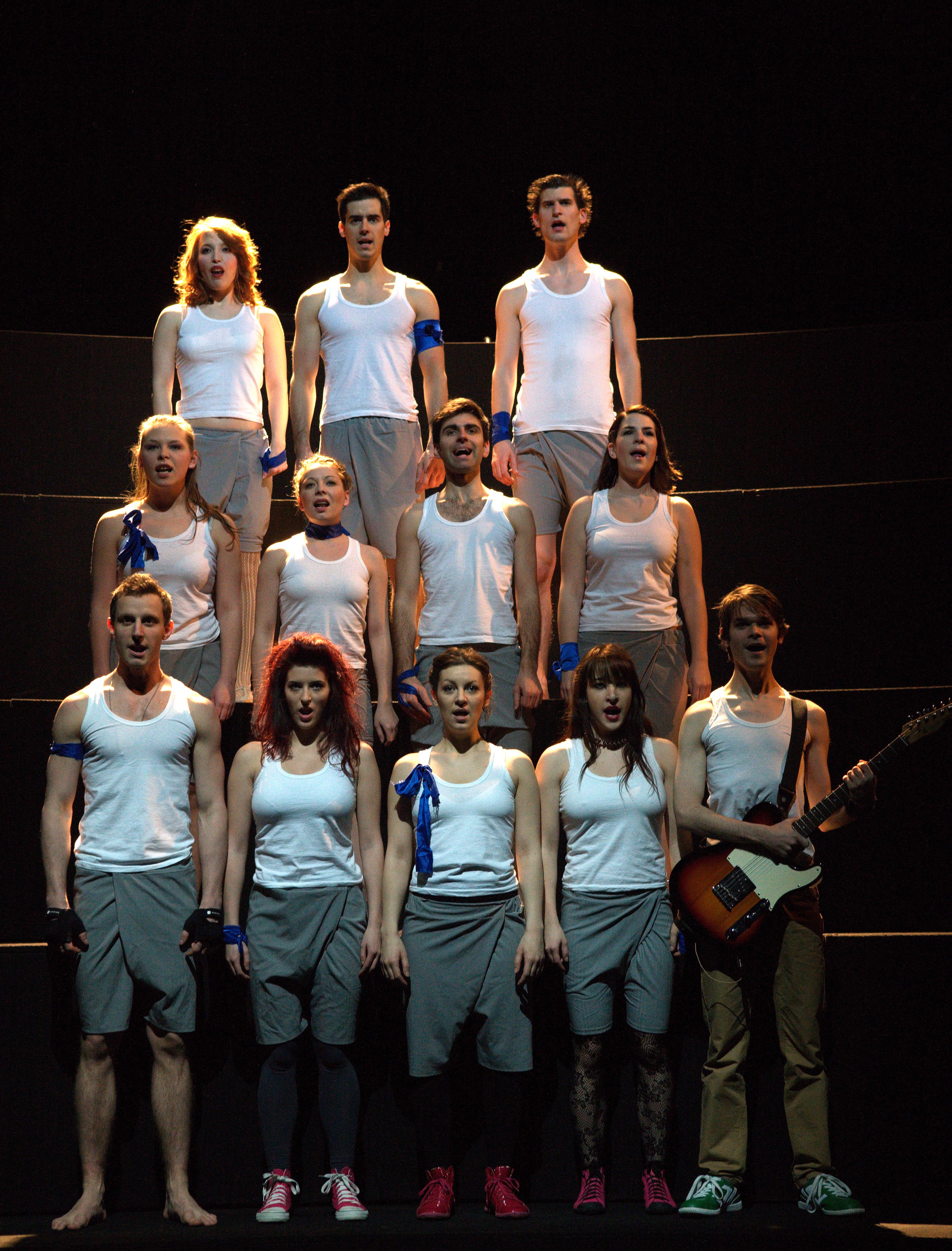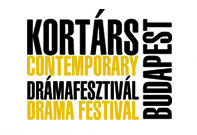Bárka Theatre
István Tasnádi: The Third Wave
Based on The Wave, a novel by Todd Strasser and a study by Ron Jones
28th October 2013 18.00
Bárka Theatre
100’ without intermission
in Hungarian, with English subtitles

Photo: Szabolcs Dudás
CAST
KRISTÓF DÉGI, teacher: Balázs Dévai
ÁGOTA NAGY, teacher: Kriszta Szorcsik
ÁRPÁD KOBLÉNYI, teacher: Róbert Kardos
JUTKA SZALAI, PhD, Mrs. principal: Anikó Varga
MÁRK: Zoltán Horváth guest artist
GUSZTI: János Gergely Tóth guest artist
KARINA: Mária Kőszegi guest artist
LIZA: Klári Tolnai guest artist
BENDZSI: Mátyás Marofka guest artist
GÖRBE: Balázs Jerger student
ANDI: Viktória Sipos guest artist
LÓCI: Péter Árvai guest artist
ORSI: Flóra Herman guest artist
ÁDÁM: Balázs Kulcsár guest artist
ILDIKÓ: Réka Császár guest artist
SZABI: Bence Erdős
HAVER: Péter Deli
and: Lilla Csap, Klaudia Kurucz, Kitti Jakopánecz, Kinga Pap
Scenery design: Heike Vollmer
Costume design: Gergely Szabó
Music: András Monori
Choreography: Eszter Gyevi-Bíró
Assistant to the director: Katalin Gábos
Directed by György Vidovszky
Premier: 10. November 2012.
„WHO – The play is performed by four adult actors of Bárka Theatre together with students of director György Vidovszky. After graduation, Vidovszky who works as a director, drama pedagogue and teacher, first started to teach film then drama studies in a high school specialized in drama studies. He directed over thirty performances featuring his student actors. Later, under professional circumstances and expectations (in traditional theatre buildings) he made stage adaptations with high school students in the leading parts. In Hungary Vidovszky is the only traditional theatre director who is specialized in this specific field of and has an important role in creating contemporary youth theatre in Hungary. Recently, he has been collaborating with István Tasnádi, a playwright who has turned towards youth drama.
WHAT – The play is about a project week at school. The teacher examines how it is possible to introduce open dictatorship in an arbitrary and average community in a way that the members would even want to be and enjoy being deprived from their freedom.
WHY- After the performance the idea that “such a thing can never occur again” may be questioned easily. Of course, regarding the initial situation, the performance is fictitious already, and the play is much more a model than a real drama. Although there are a lot of allusions to the sentences and motives of today’s public life of Hungary, Tasnádi and Vidovszky manage to avoid demagogy and simplification, in spite of the fact that they declare that they are not trying to find the reasons in the depth of the souls of the individual characters but in the community. They try to examine the situation in relation to the community. The ending of the performance raises a responsibility that no one can avoid. Its burden lasts for a whole life.” (István Ugrai)
Tickets
http://www.barka.hu/hu/jegy-info.html
For more information:
http://www.barka.hu/hu/eladasok/uj-bemutatok.html/119.html
Critics:
http://www.revizoronline.com/hu/cikk/4261/a-harmadik-hullam-barka-szinhaz/
http://fidelio.hu/szinhaz/kritika/a_harmadik_hullam_duborgo_ifjusag

















